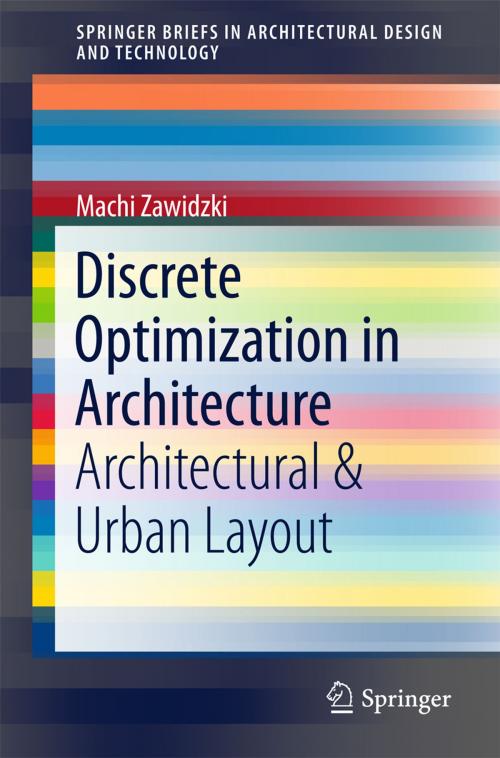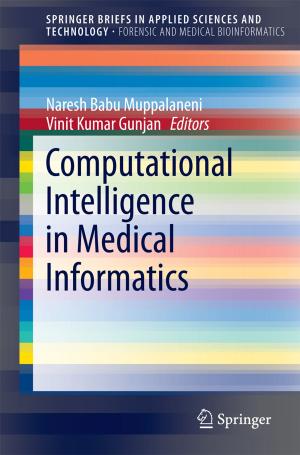Discrete Optimization in Architecture
Architectural & Urban Layout
Nonfiction, Science & Nature, Technology, Construction & Construction Trades, Computers, Application Software, CAD/CAM| Author: | Machi Zawidzki | ISBN: | 9789811011061 |
| Publisher: | Springer Singapore | Publication: | July 9, 2016 |
| Imprint: | Springer | Language: | English |
| Author: | Machi Zawidzki |
| ISBN: | 9789811011061 |
| Publisher: | Springer Singapore |
| Publication: | July 9, 2016 |
| Imprint: | Springer |
| Language: | English |
This book presents three projects that demonstrate the fundamental problems of architectural design and urban composition – the layout design, evaluation and optimization. Part I describes the functional layout design of a residential building, and an evaluation of the quality of a town square (plaza).
The algorithm for the functional layout design is based on backtracking using a constraint satisfaction approach combined with coarse grid discretization. The algorithm for the town square evaluation is based on geometrical properties derived directly from its plan.
Part II introduces a crowd-simulation application for the analysis of escape routes on floor plans, and optimization of a floor plan for smooth crowd flow. The algorithms presented employ agent-based modeling and cellular automata.
This book presents three projects that demonstrate the fundamental problems of architectural design and urban composition – the layout design, evaluation and optimization. Part I describes the functional layout design of a residential building, and an evaluation of the quality of a town square (plaza).
The algorithm for the functional layout design is based on backtracking using a constraint satisfaction approach combined with coarse grid discretization. The algorithm for the town square evaluation is based on geometrical properties derived directly from its plan.
Part II introduces a crowd-simulation application for the analysis of escape routes on floor plans, and optimization of a floor plan for smooth crowd flow. The algorithms presented employ agent-based modeling and cellular automata.















